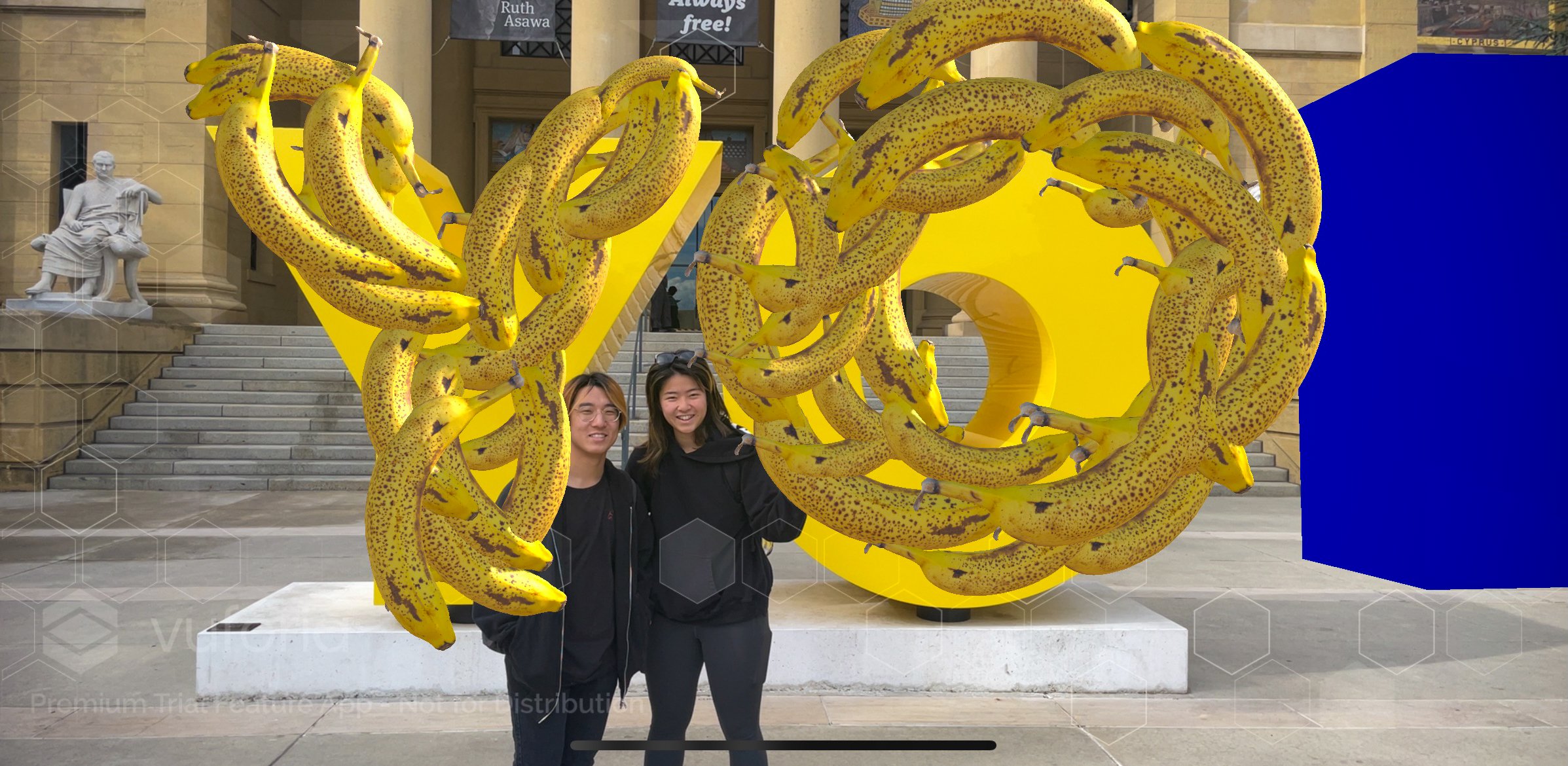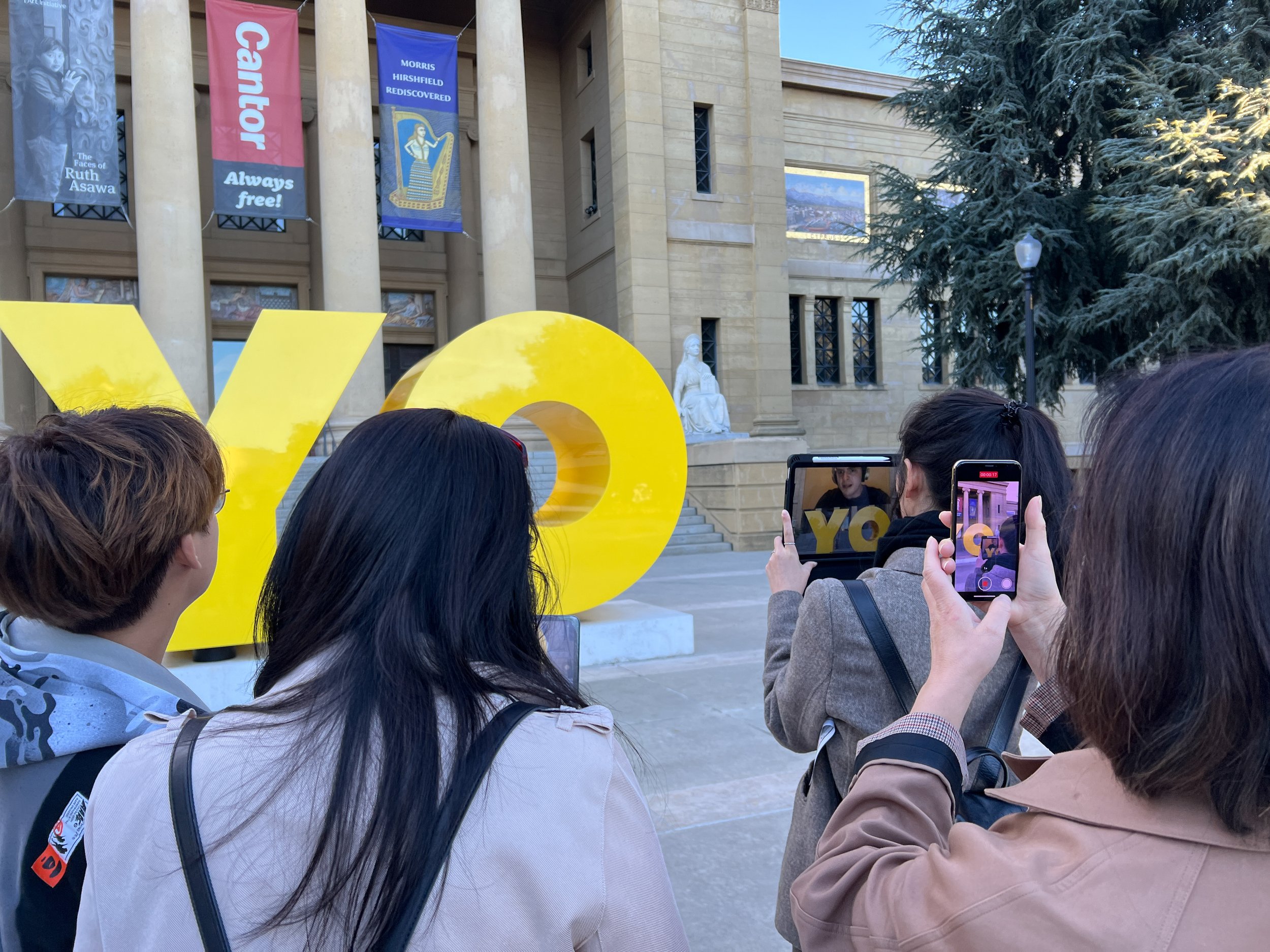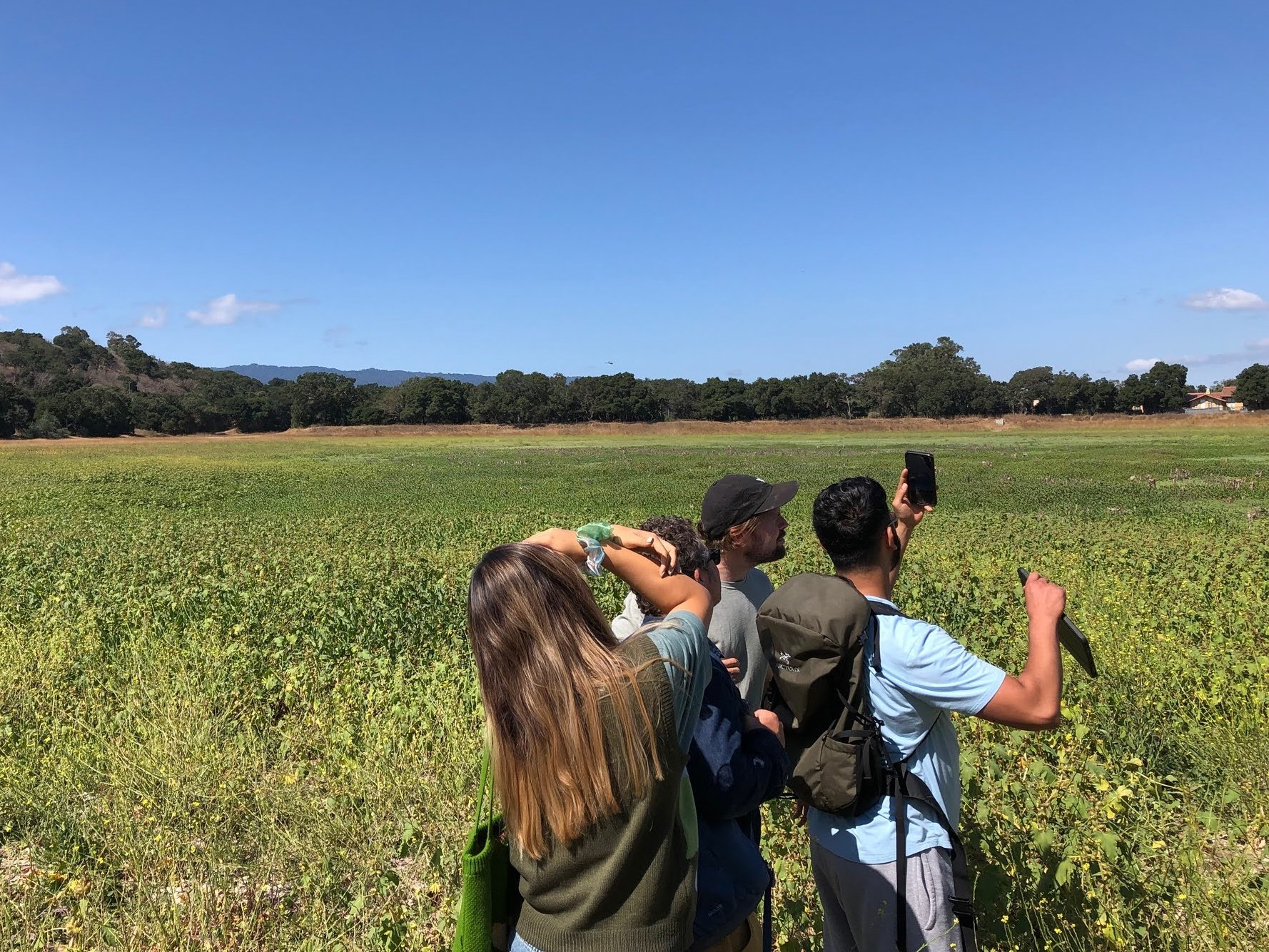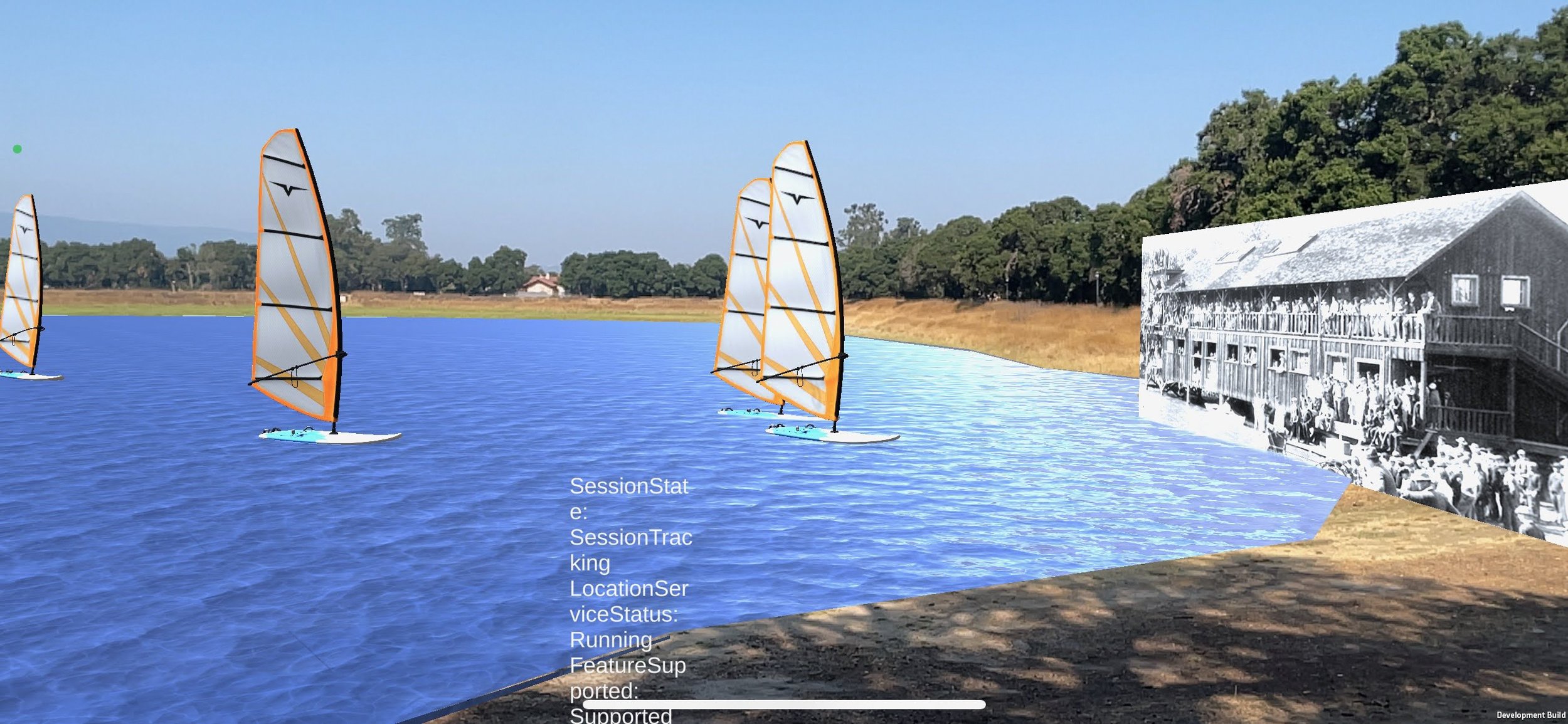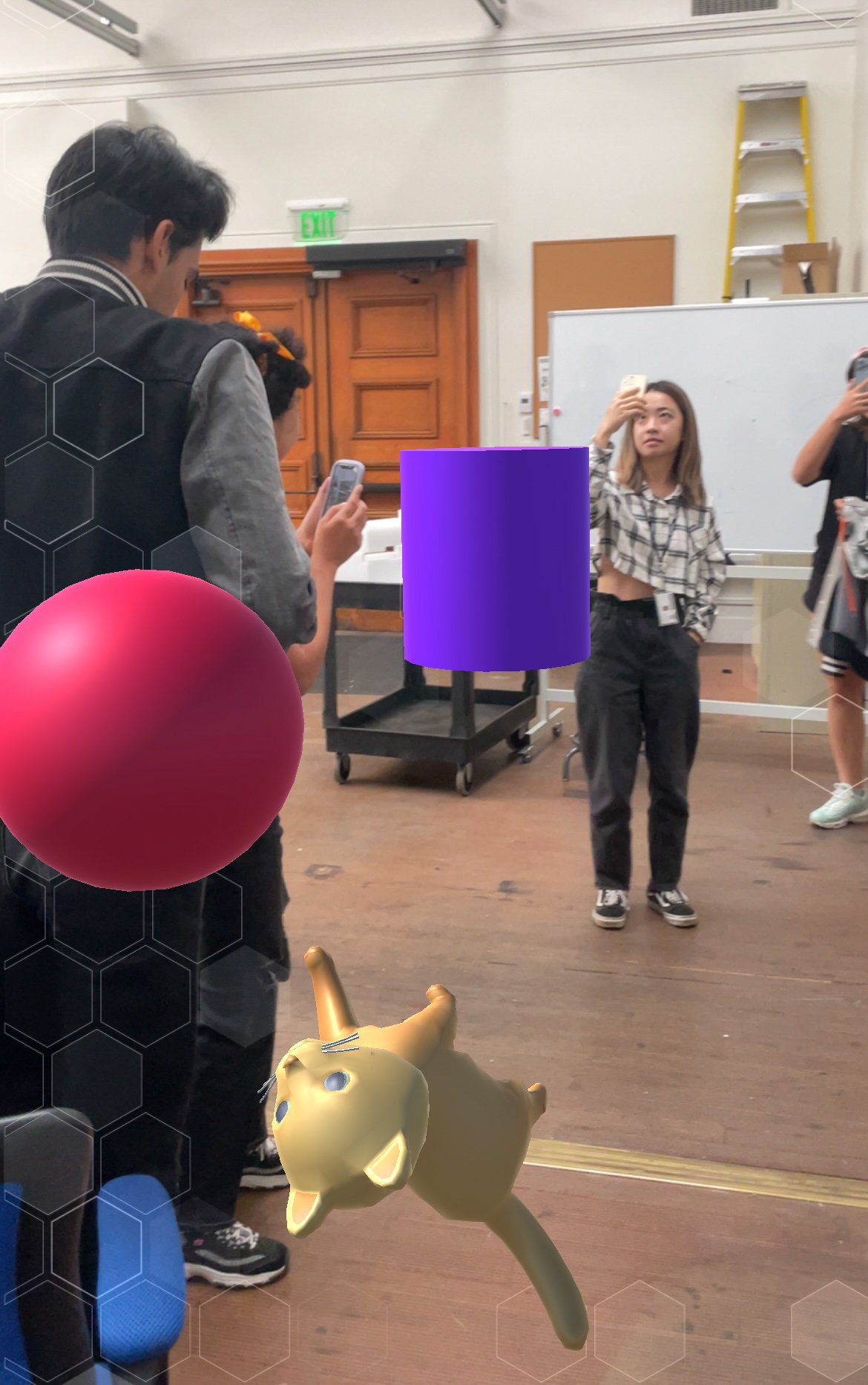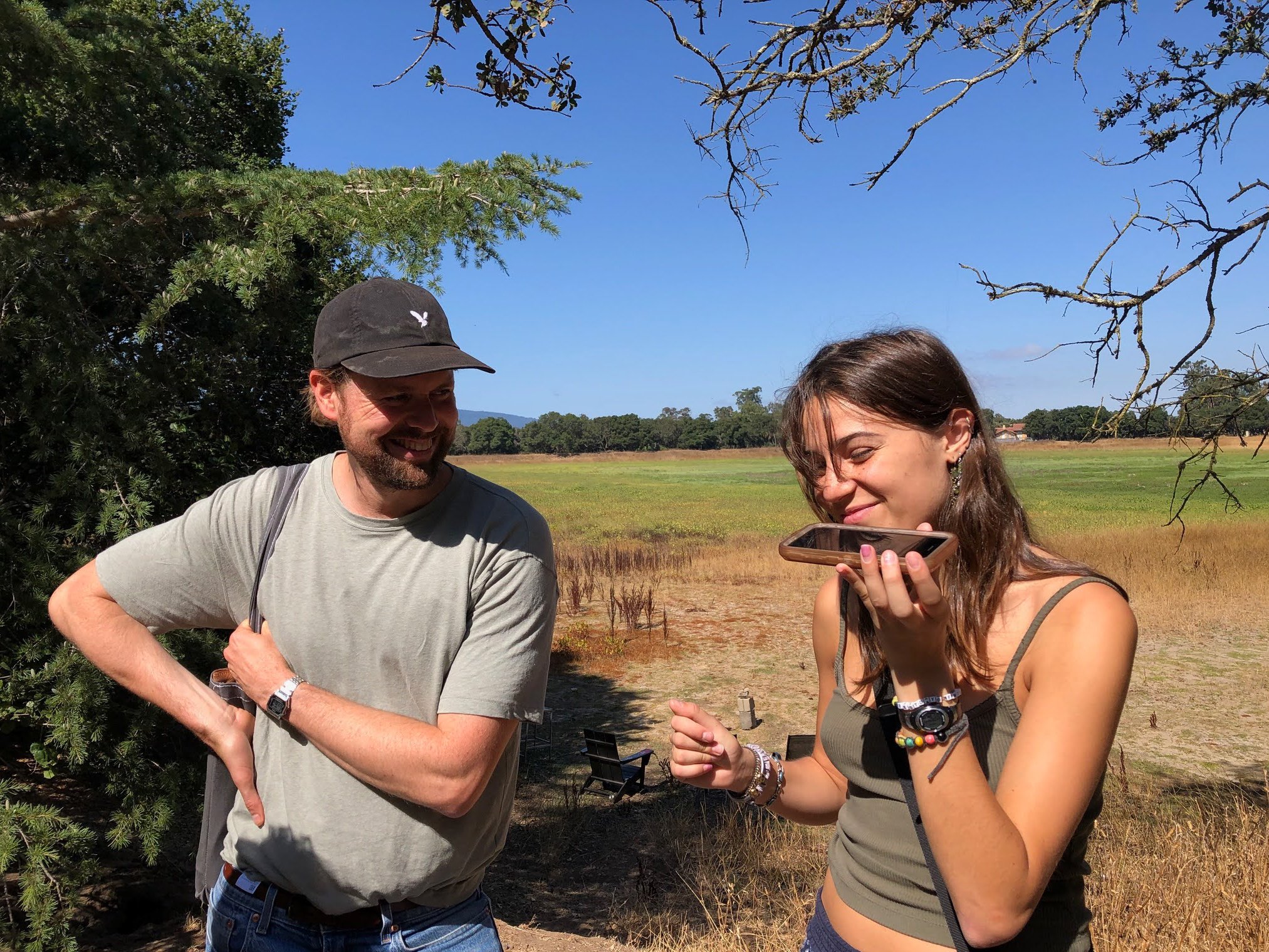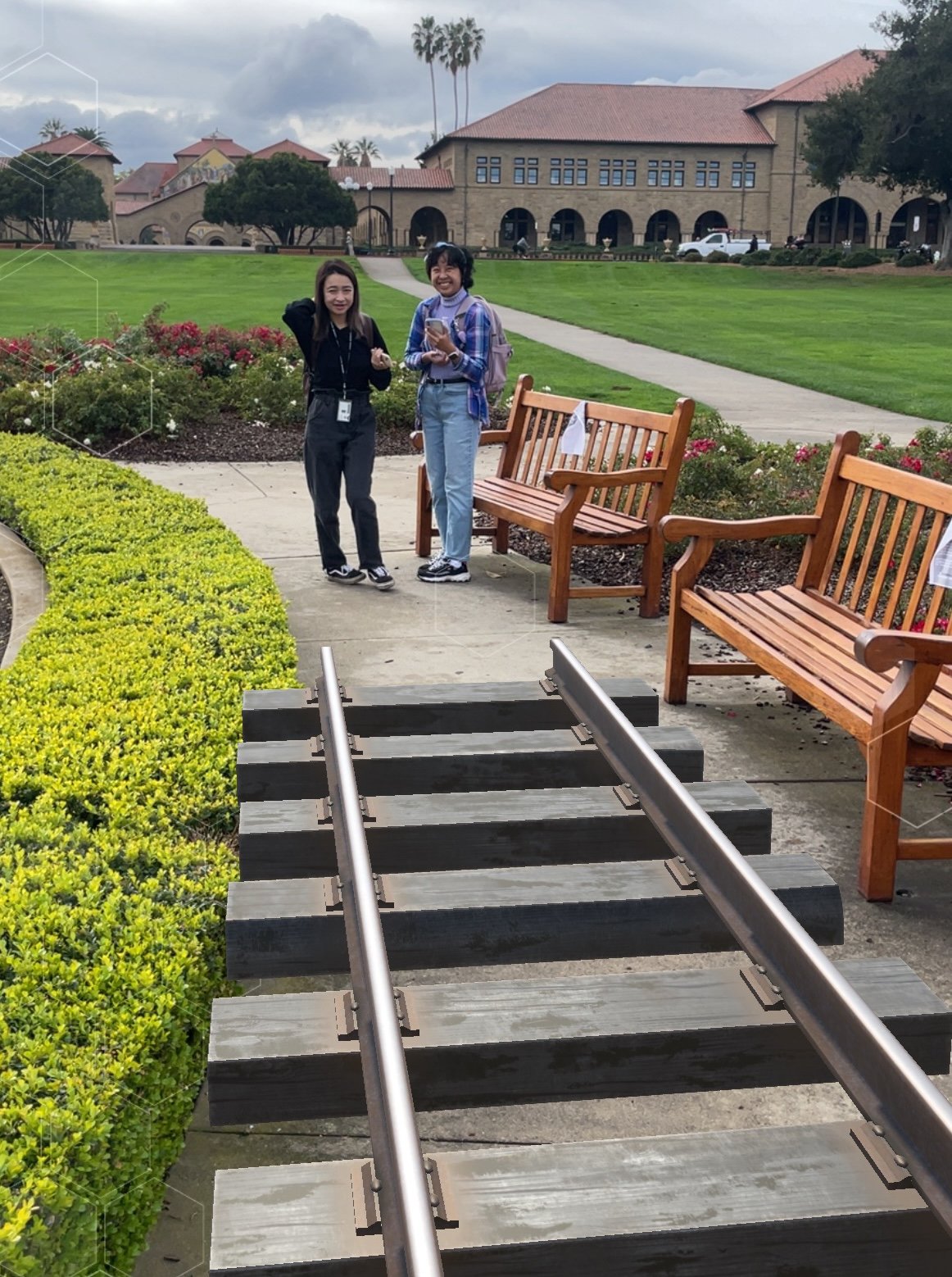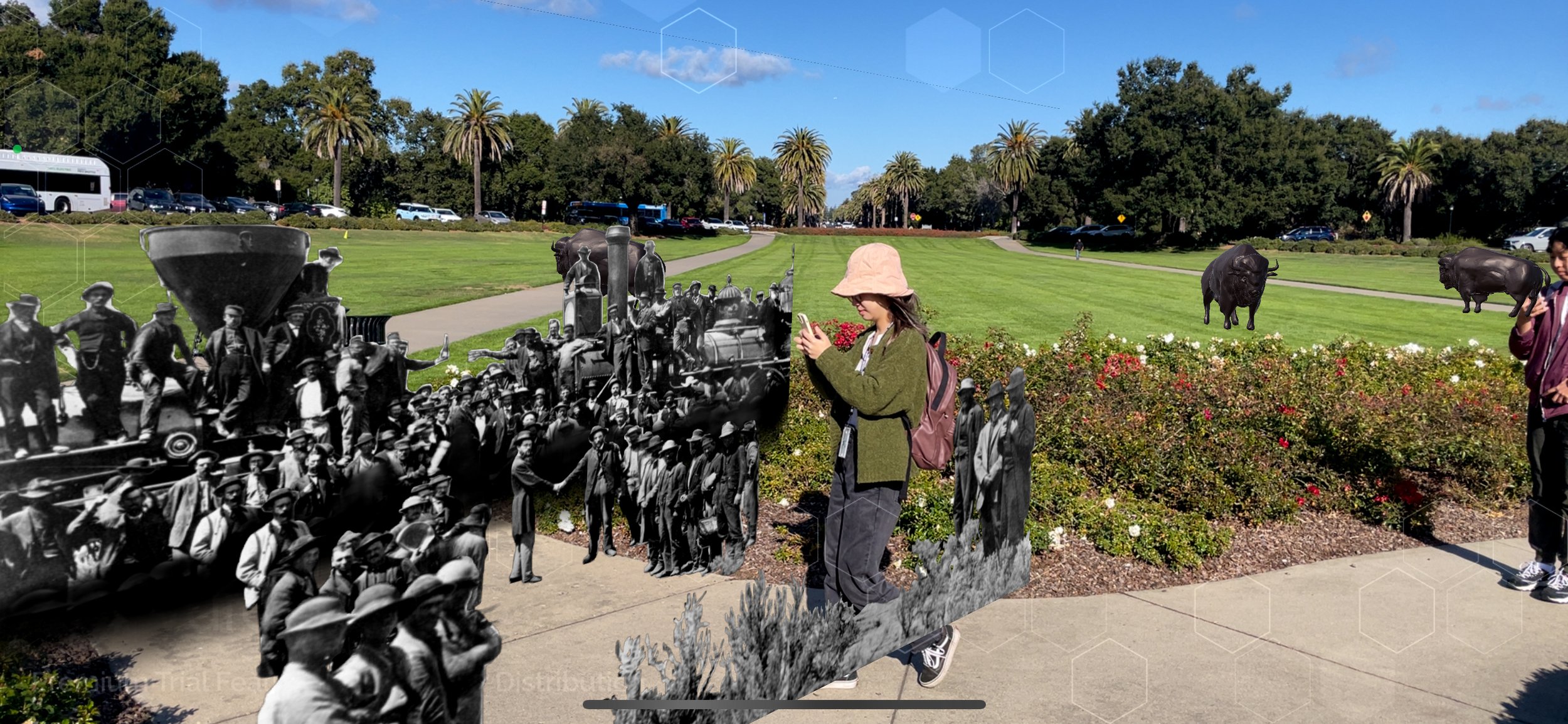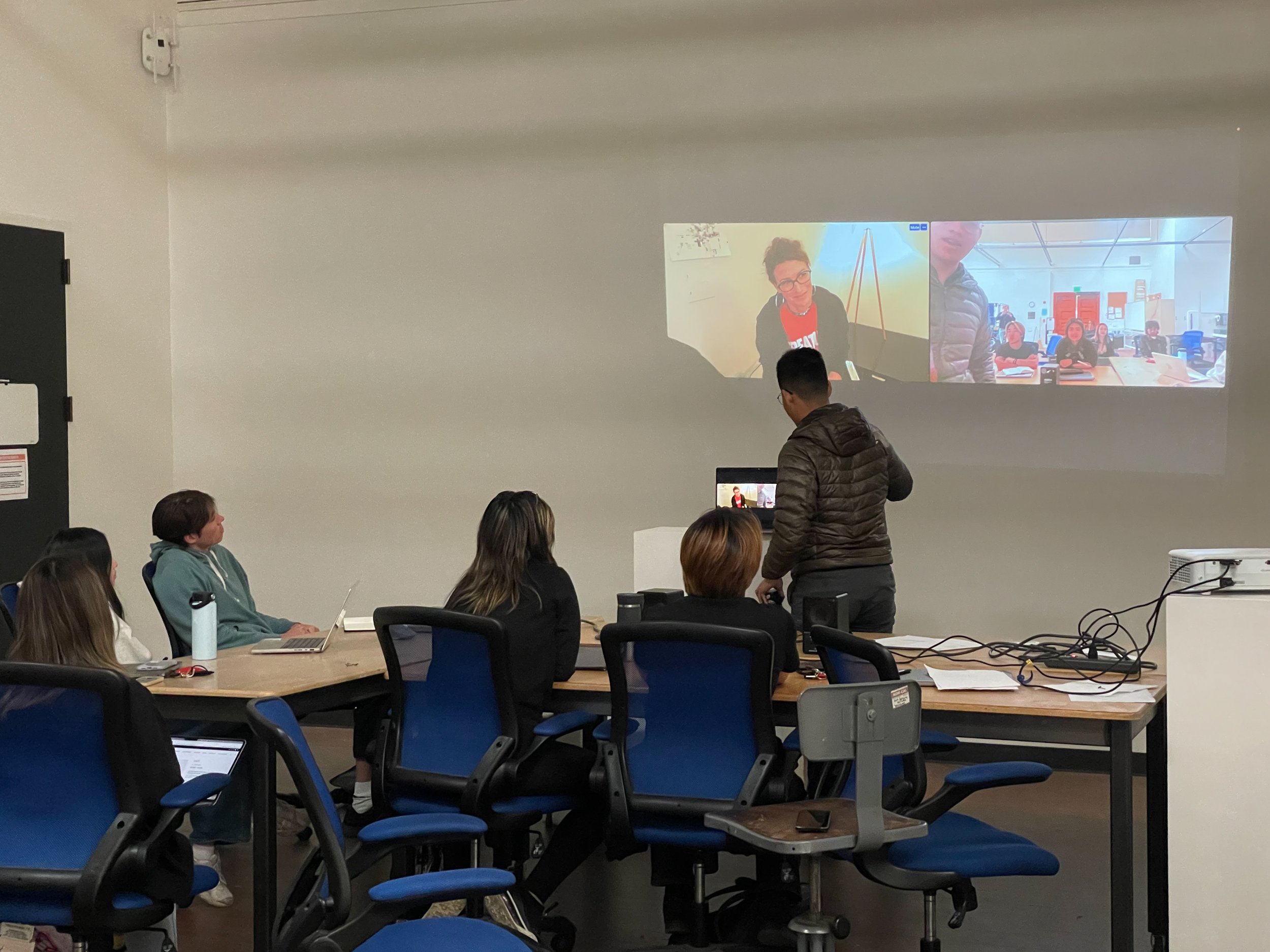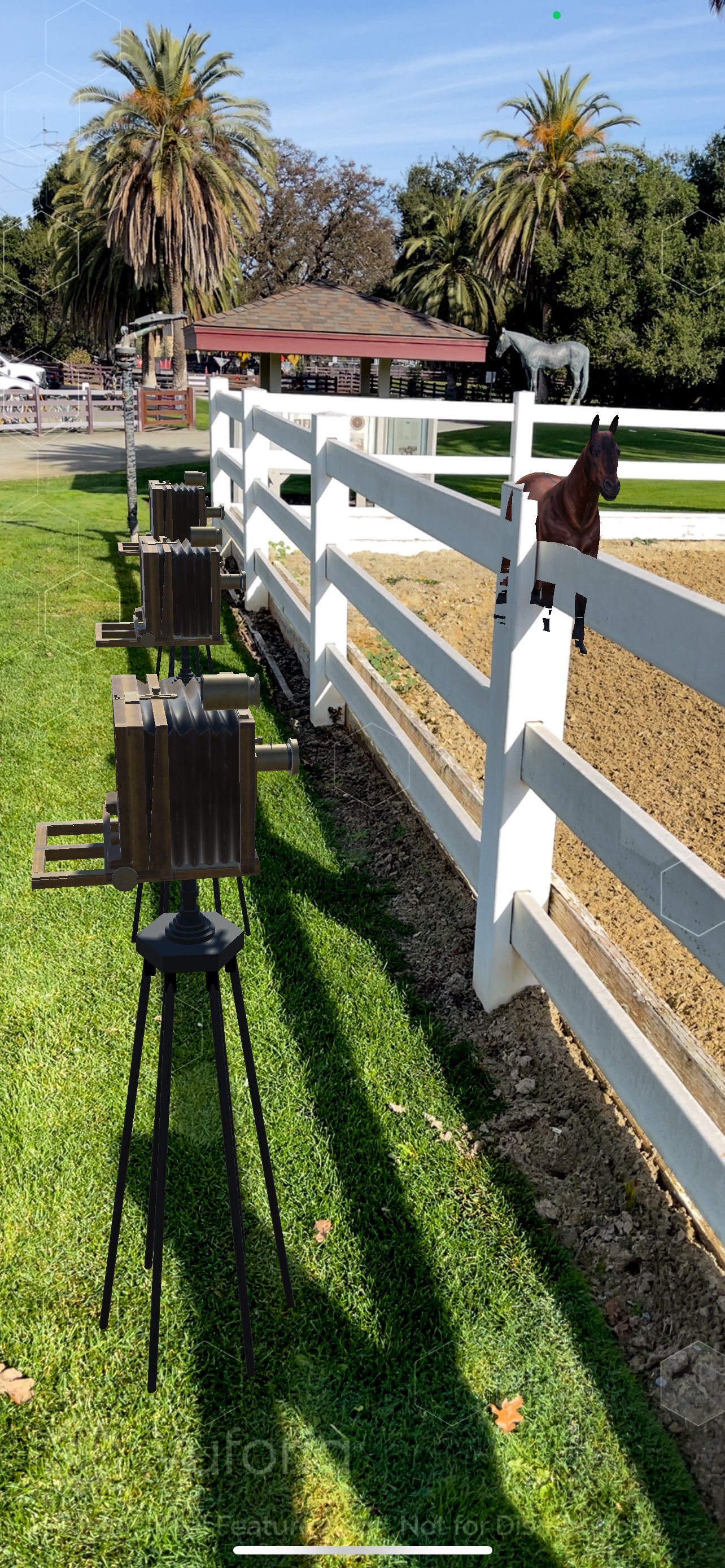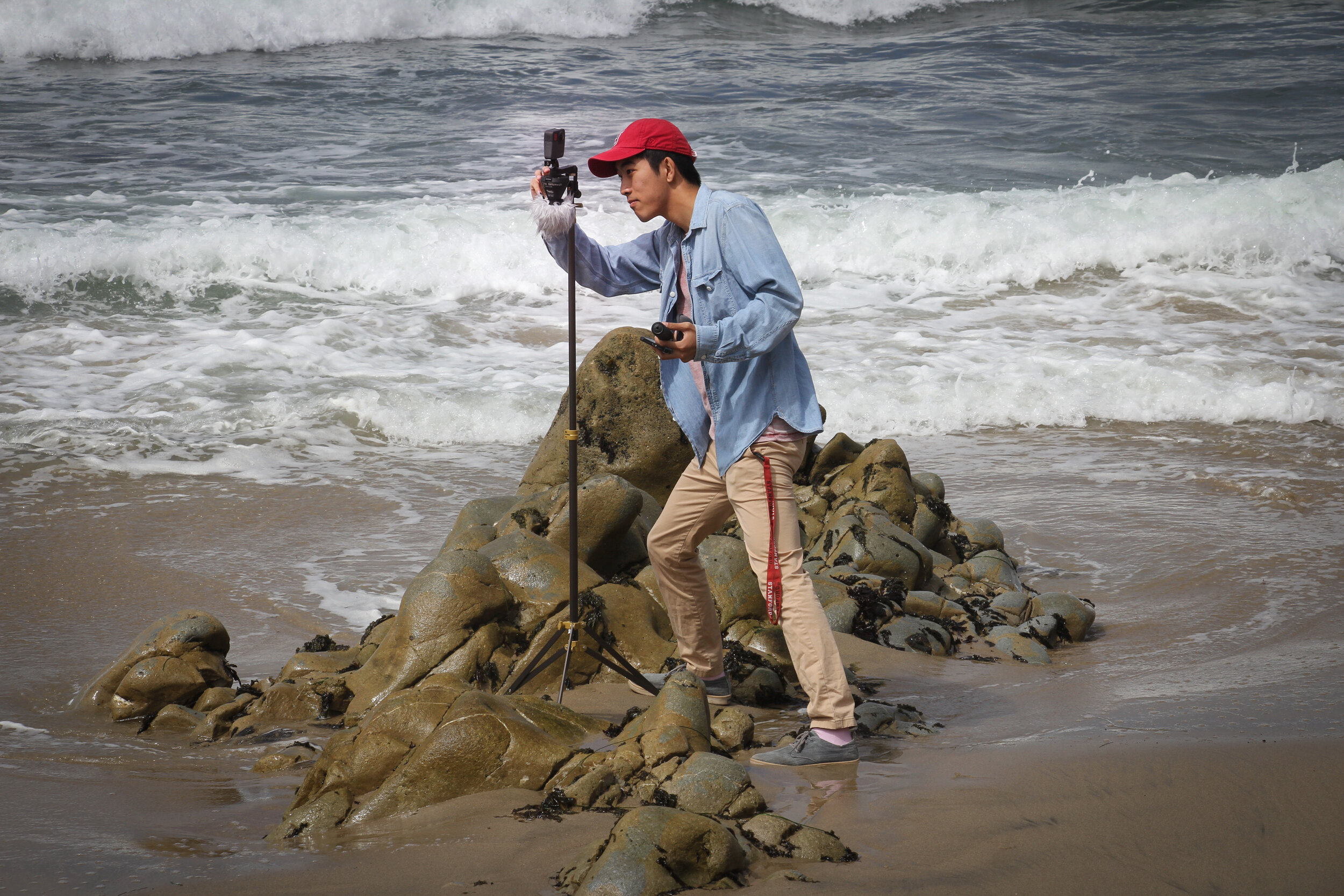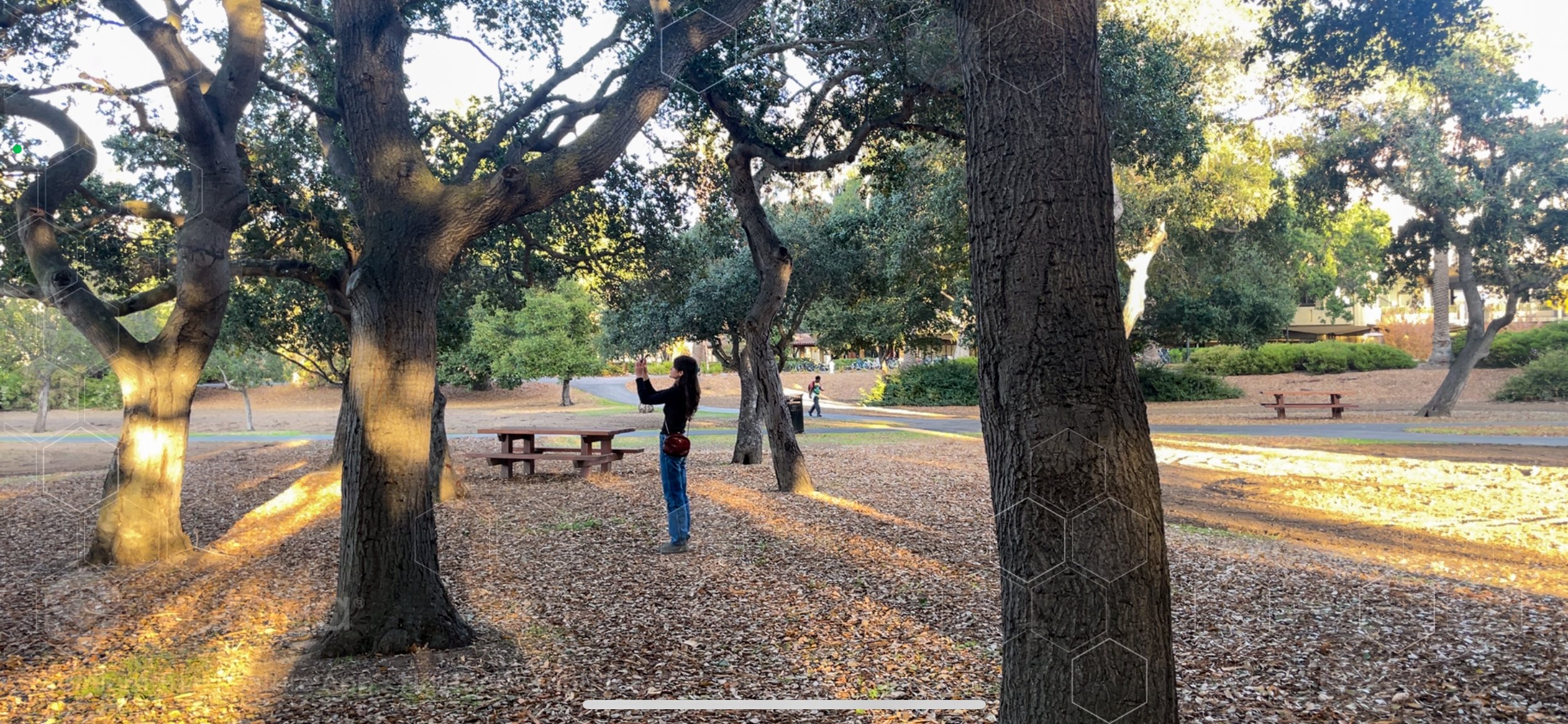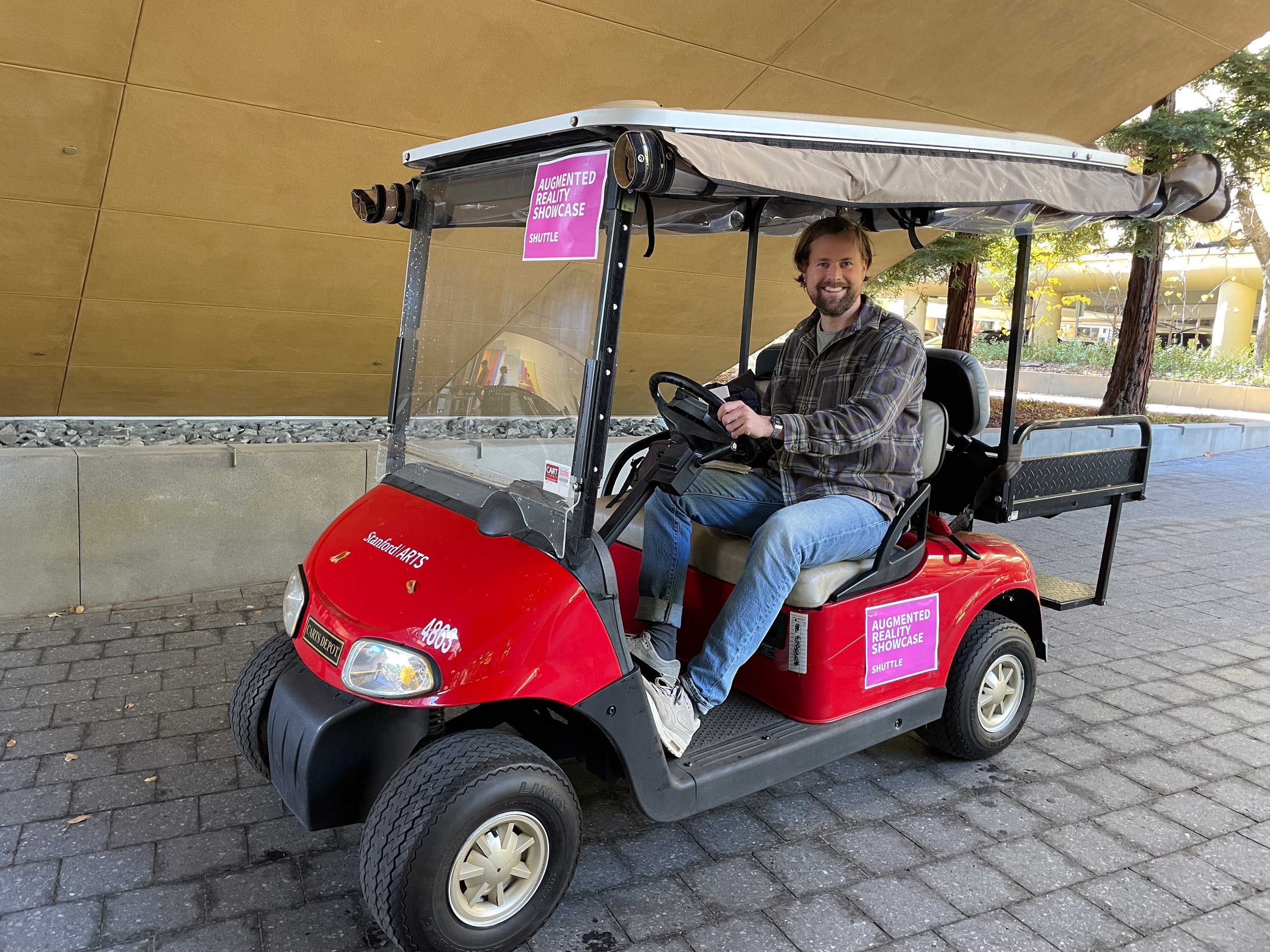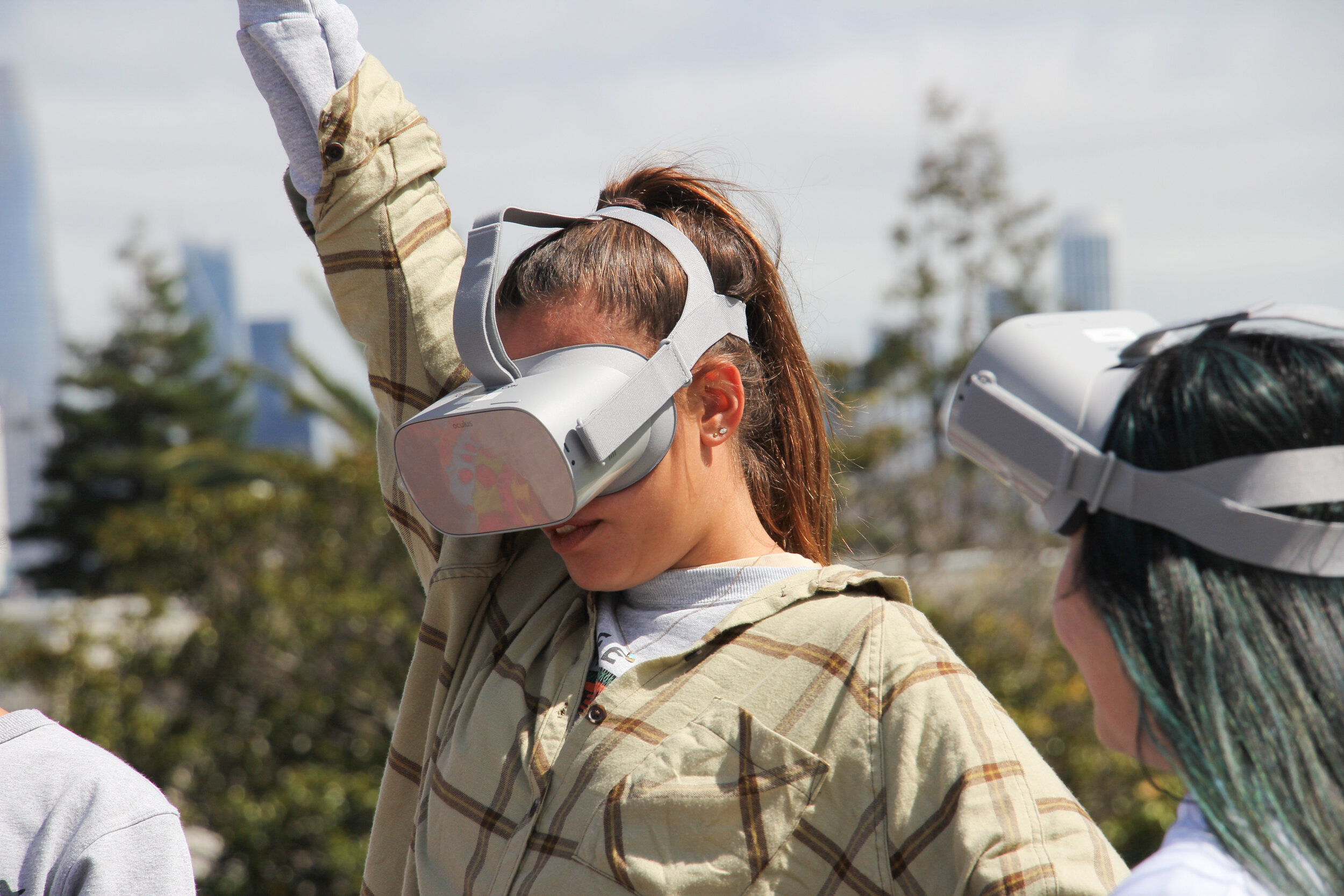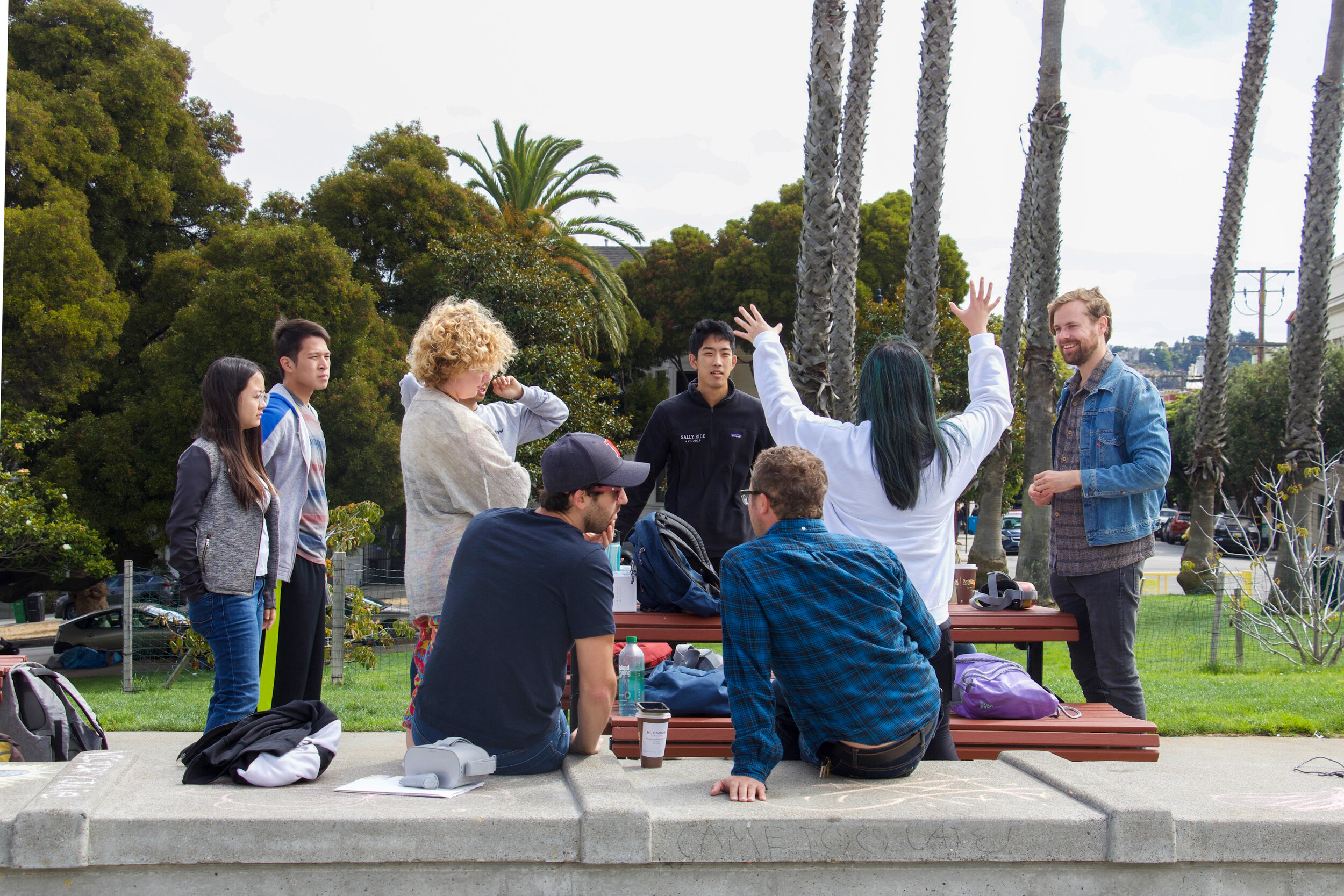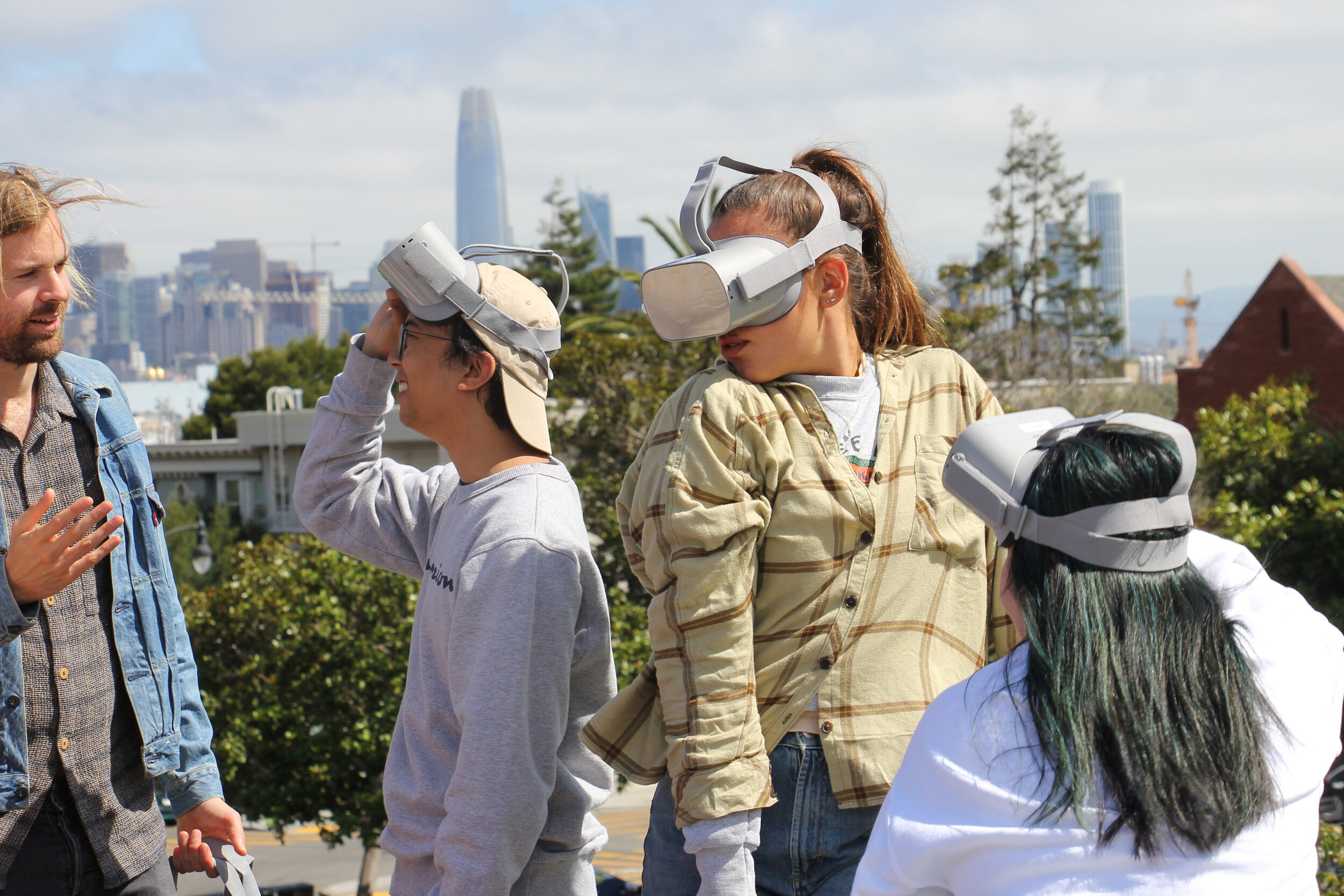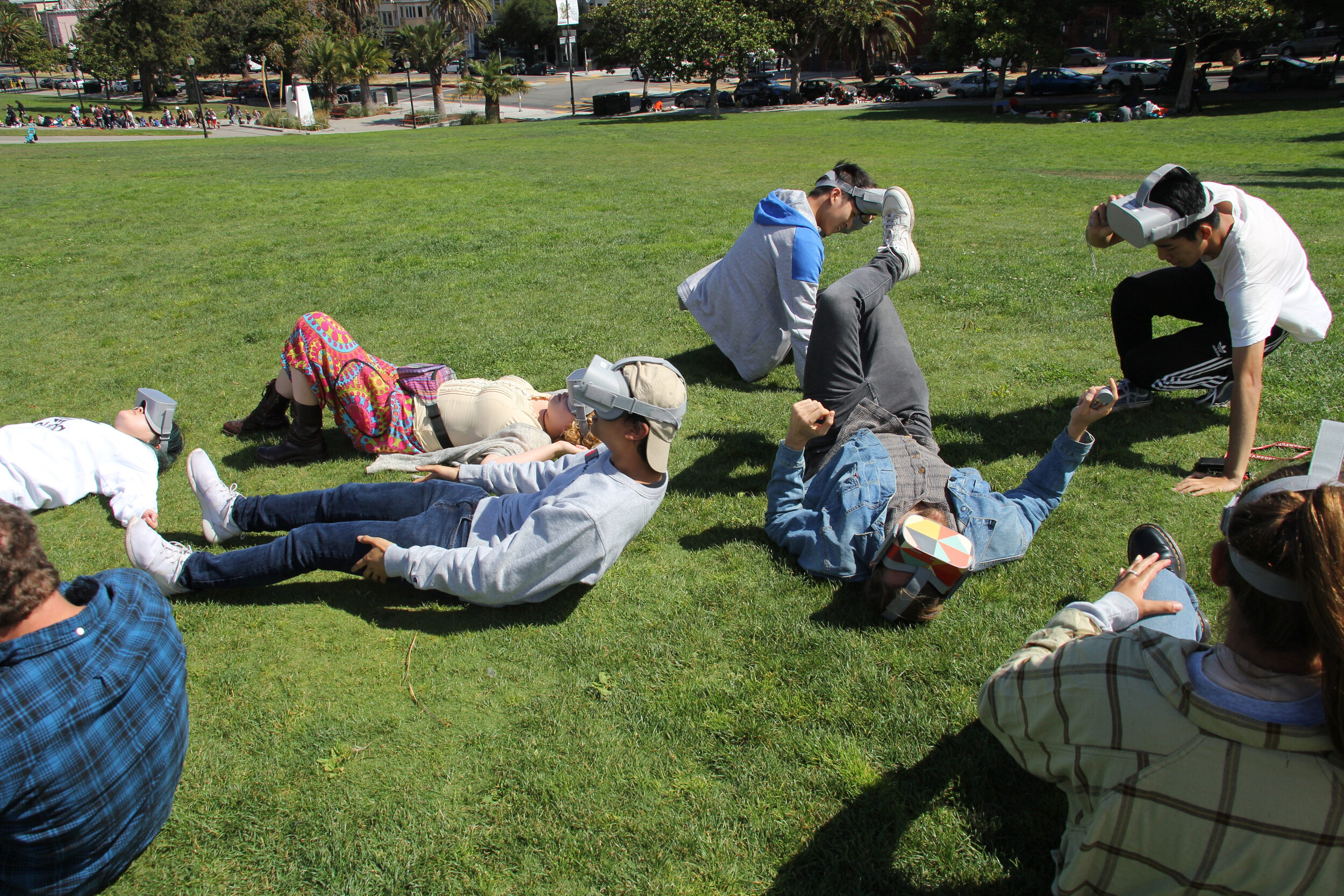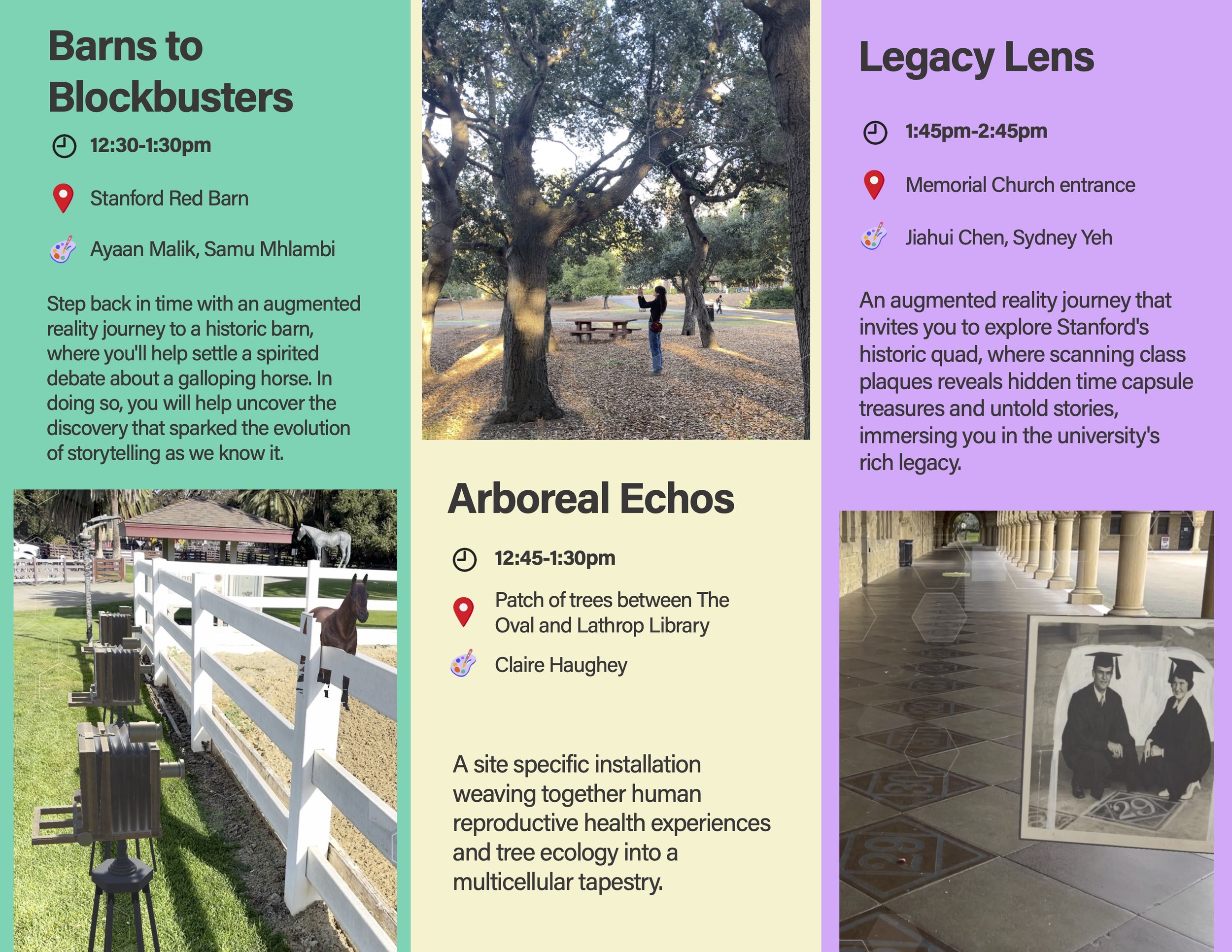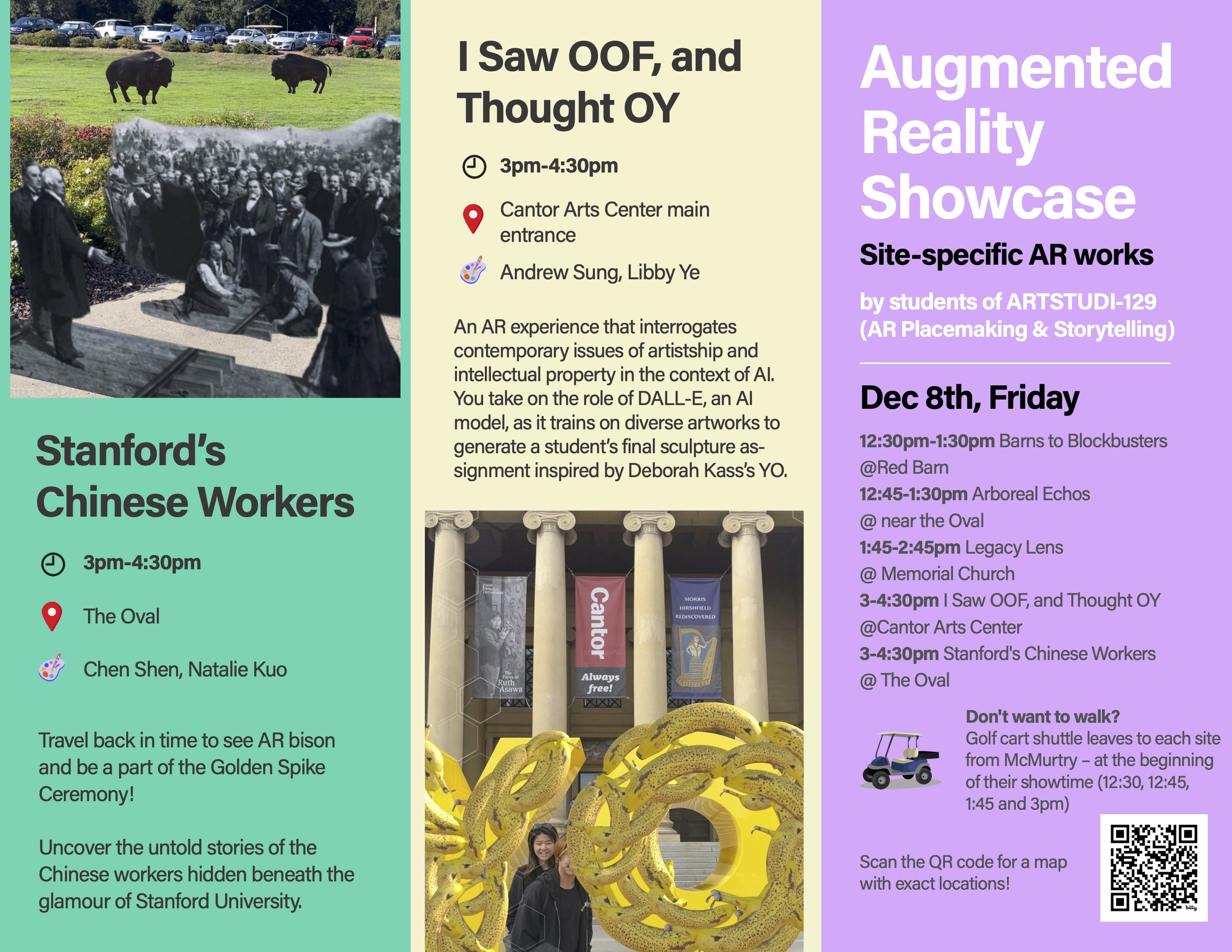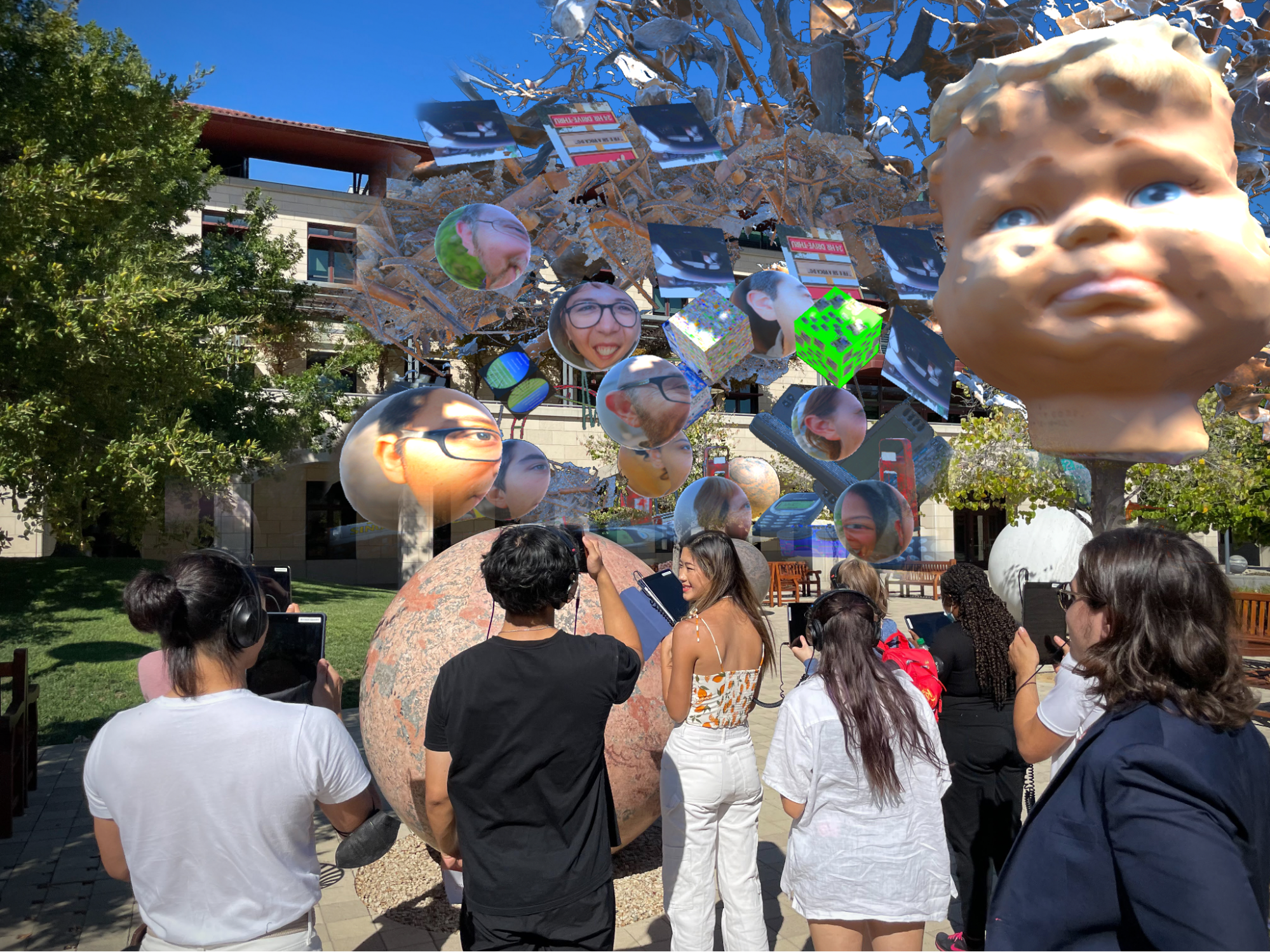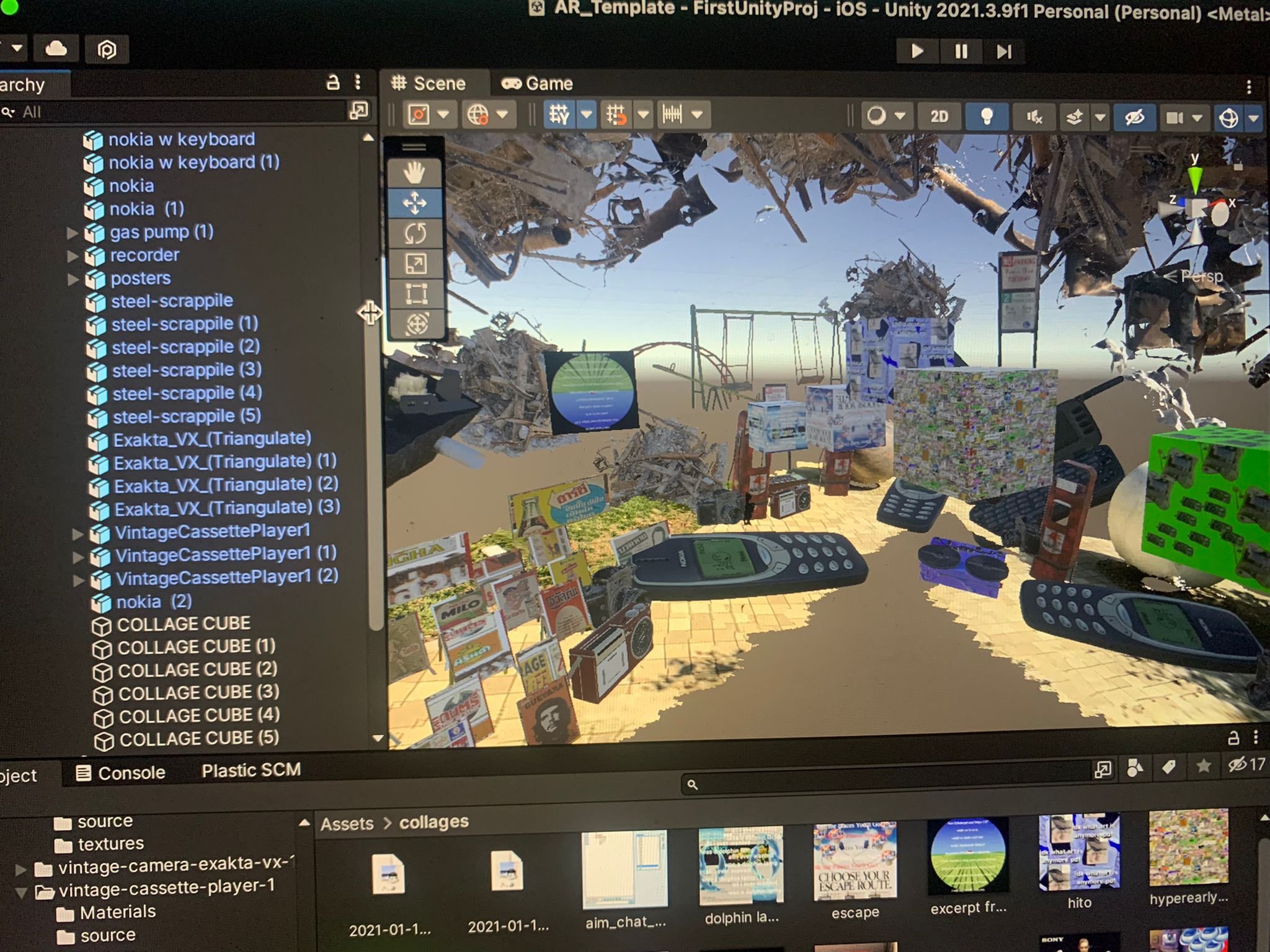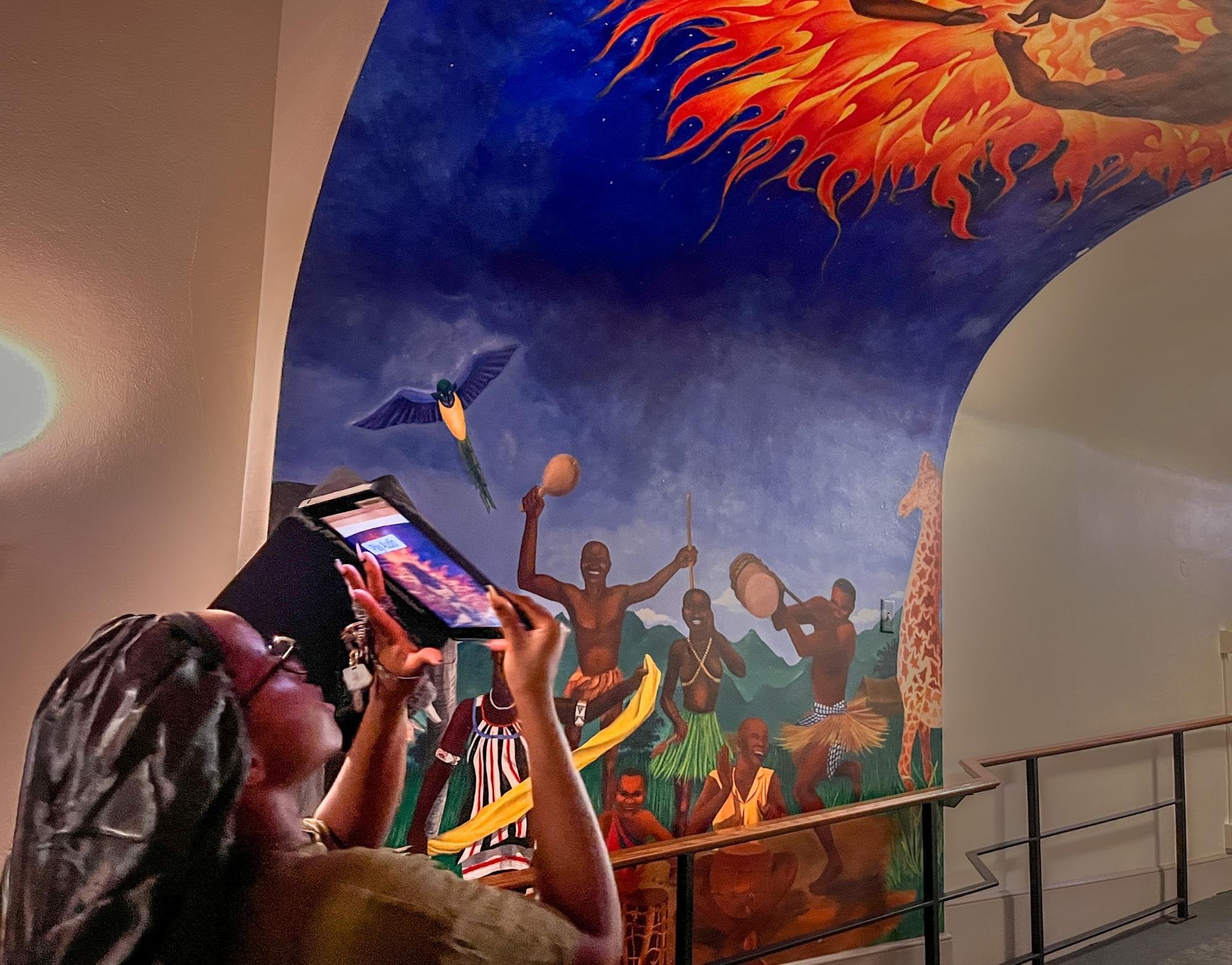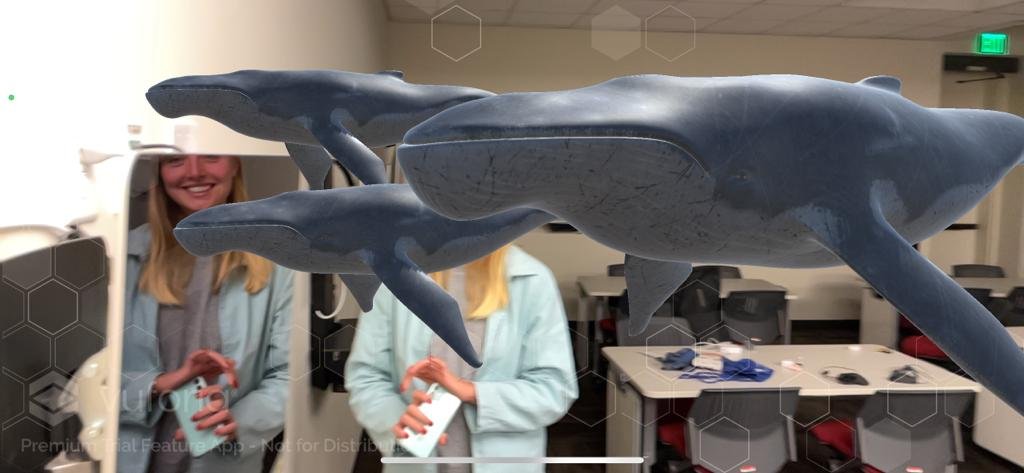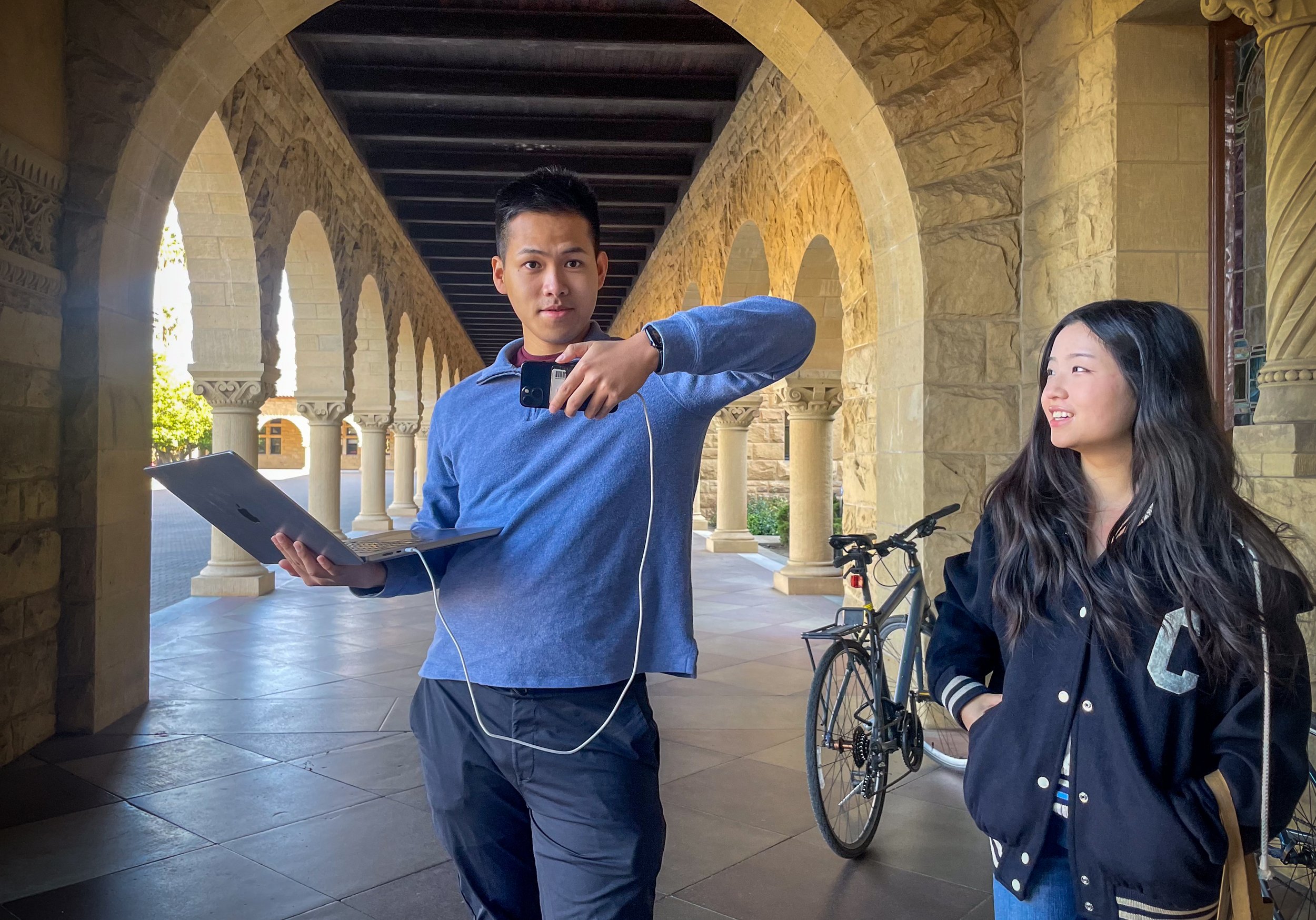Teaching AR/MR/VR classes AT STANFORD
TLDR;
I teach AR/MR at Stanford.
The goal is simple: create AR/MR that is meaningful. (Yes, we learn to do more than the usual lazy tech demos!)
To achieve this, we blend comprehensive theoretical foundations with robust, hands-on learning and creation.
We also add playfulness, art, and depth – depth is important!
All courses culminate in students installing site-specific interactive AR/MR experiences all around campus.
People say:
“I was really impressed by what I saw. These experiences were unlike most of the things I've seen in the industry both in terms of depth and creativity.”
(Josh Mao @ Niantic/8thWall)
“This is a really great class! Barna is a very responsible teacher and has tons of experience in the augmented reality art space. I felt like I learned so much in the short span of 10 weeks. And it is so rewarding to see my final project to fruition in the end. Would highly recommend this class to anyone who is interested in augmented reality art.”
(former student, 2023)
”This is one of the best classes I’ve ever taken at Stanford”
(former student, 2022)
2023/2024/2025/2026
My class Augmented Reality: Placemaking and Storytelling is Stanford's first 4-unit course to explore public AR/MR through a comprehensive interdisciplinary lens. This class intertwines storytelling, immersive storyliving, fine art approaches, user experience design, interaction strategies, ethical considerations both in technology and documentary, XR programming, 3D and site-specific creation tools and methods. Students are not just learning theory; they're actively designing, developing, and showcasing their AR installations and experiences throughout the Stanford campus, exploring and innovating what AR can achieve in a real-world setting.
Through hard work of 11 weeks (or for some students who took an intensive route, over only 3 weeks), students install fantastic interactive AR narratives in public spaces around the Stanford campus:
they turned a physical sculpture into a playful lamentation on appropriative art vs. AI generative art,
the normally empty grassy fields now told the stories of native bisons and unsung Chinese workers who built Stanford’s campus,
physical patches of trees have become a student’s female family members sharing about their reproductive care experiences,
a dried out lake got filled with water and life again
time capsules got animated
at Stanford’s Red Barn the audience members could help Edward Muybridge capture the galloping virtual horse to invent motion picture. – just as it originally happened there in 1878.
And the the list goes on…!
2022/2023
Prof. Jamie Meltzer and I developed a re-designed course that uses Augmented Reality and Mixed Reality to explore the erased and unseen histories of the Stanford area. Students in this class utilize a variety of tools – Sound recordings, Photogrammetry, Volumetric Capture, 3D modeling, XR Programming – to tell immersive, interactive, and spatial stories. The aim of the projects is to find “forgotten” or neglected histories and bring these lesser-known stories of the past into the present – including but not limited to Stanford’s relationship to Indigenous communities, human rights activism, and the Stanford family.
2019/2020
In an exploratory class called Expanded Cinema, students use the 360 video tools, VR approach and 360 spatial sound design to tell immersive stories. Students use the conceptual framework of experimental cinema and documentary film to inform their work, while also pushing toward a new artistic language in this still-emerging form of VR storytelling. Students work in teams to create a series of short immersive pieces, culminating in a 3-5 minute 360 video and an immersive installation, with a keen emphasis on experimentation.
Acknowledgment
Since 2019, I've had the privilege of teaching XR at Stanford. My journey has been shaped significantly by colleagues and mentors from Budapest to Stanford. I'm deeply indebted to individuals like Jamie Meltzer, Camille Utterback, Jesse Flemming, and Geri Migielicz, who enriched my understanding of XR and pedagogy. Thinkers and writers such as Jaron Lanier, Jeremy Bailenson, close collaborators like Dane Christensen, guest artists like Tamiko Thiel, Nancy Baker-Cahill or the publications/talk series at the MIT OpenDoclab have also profoundly impacted my identity as both an artist and educator. All courses I've taught are a testament to their influence and inspiration.
